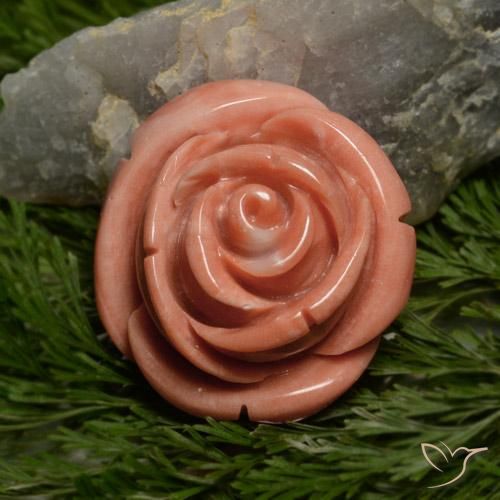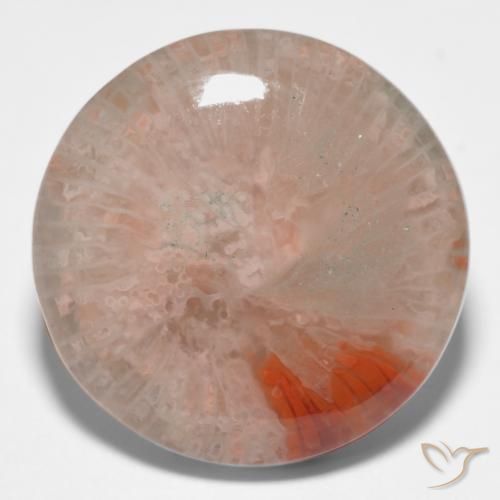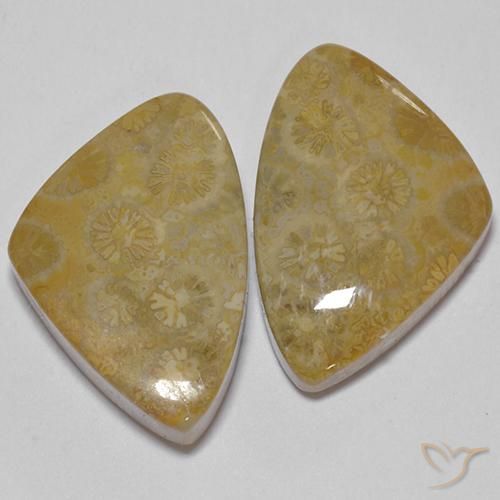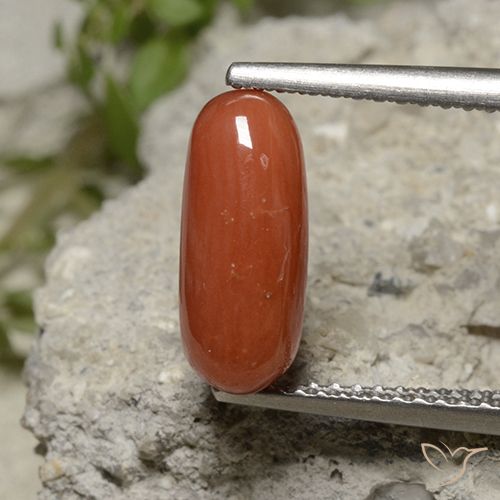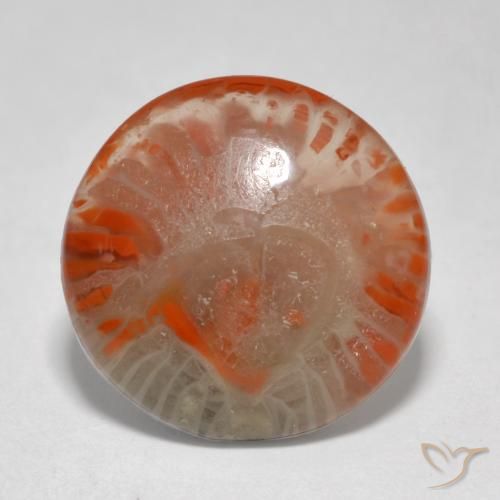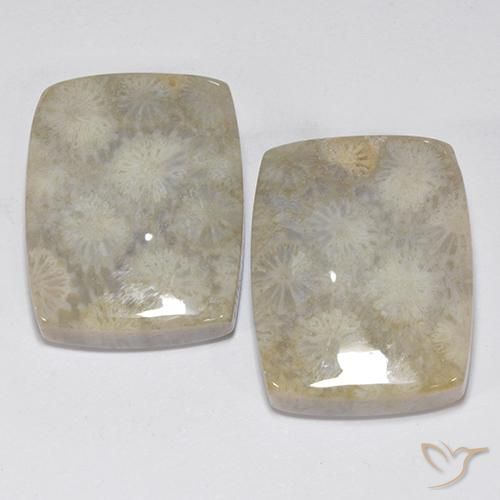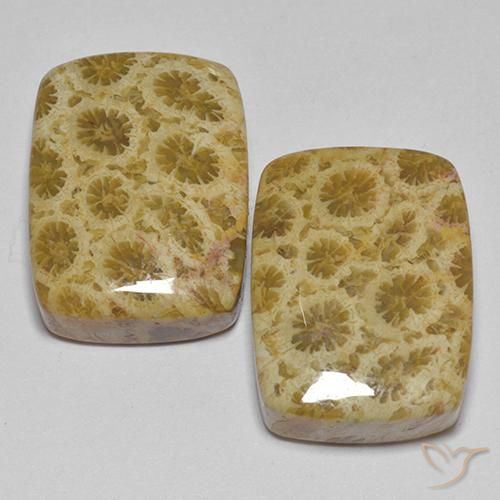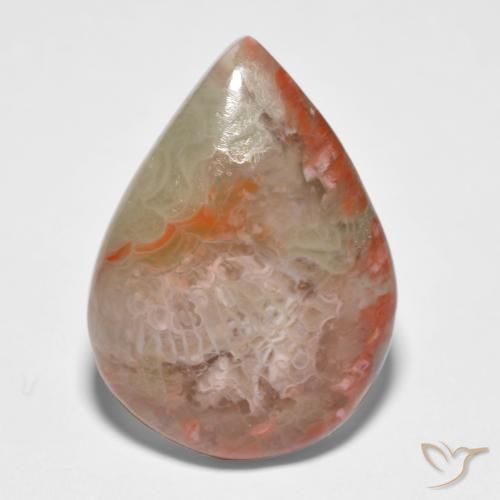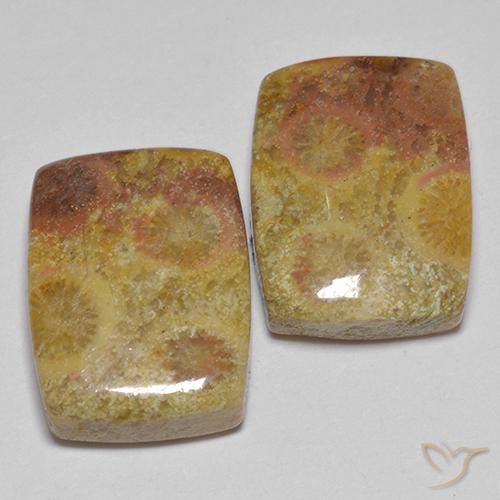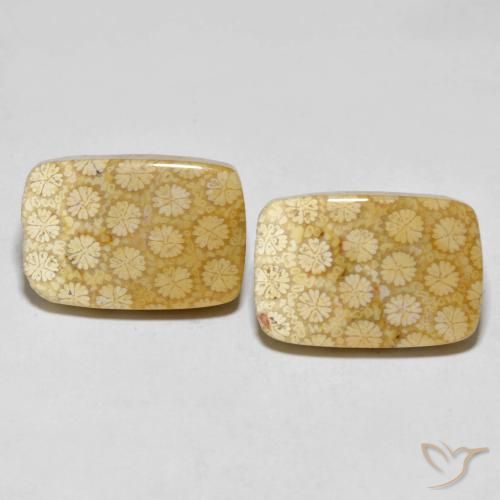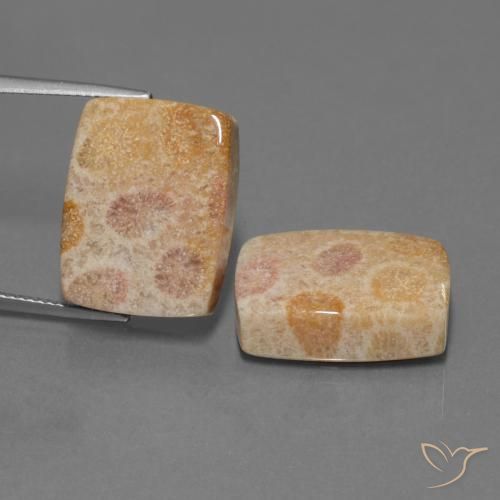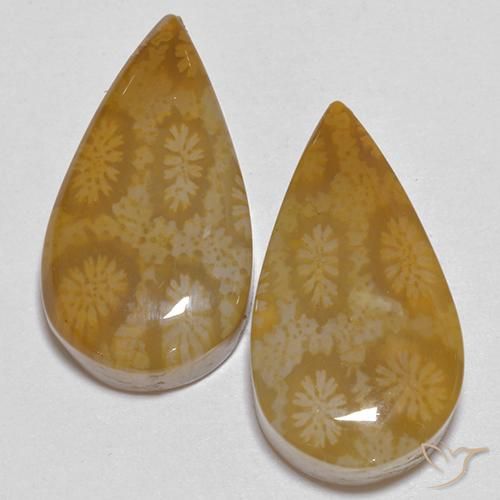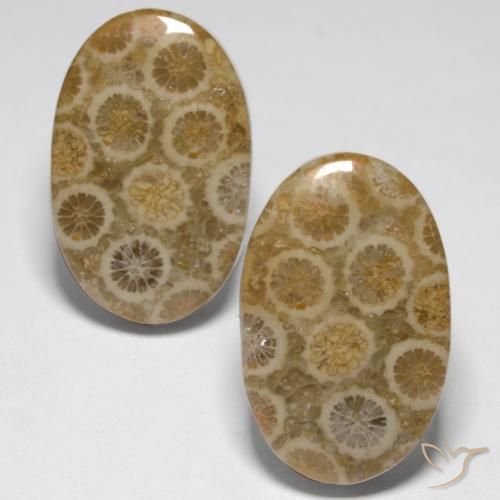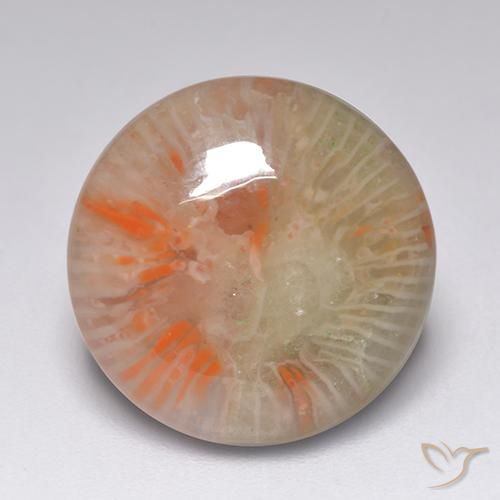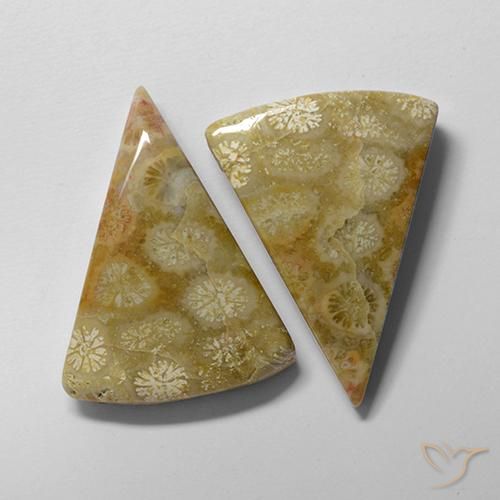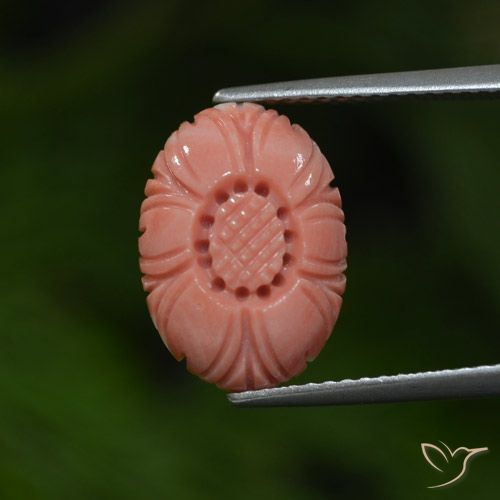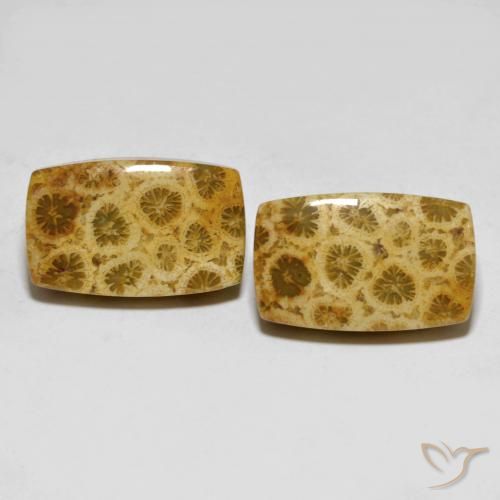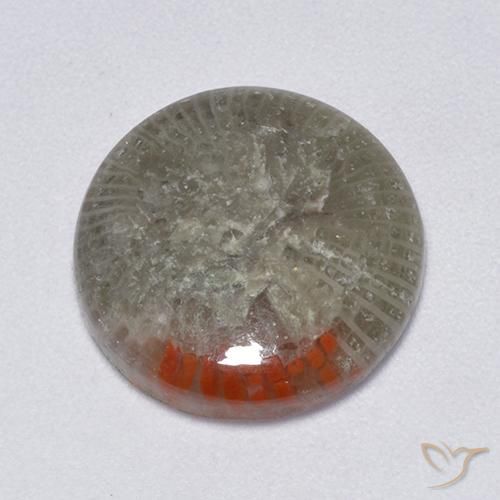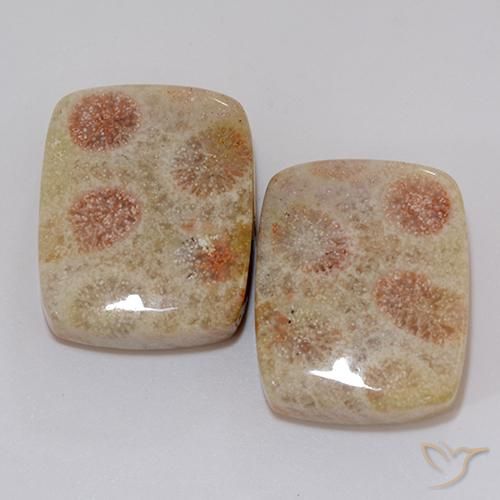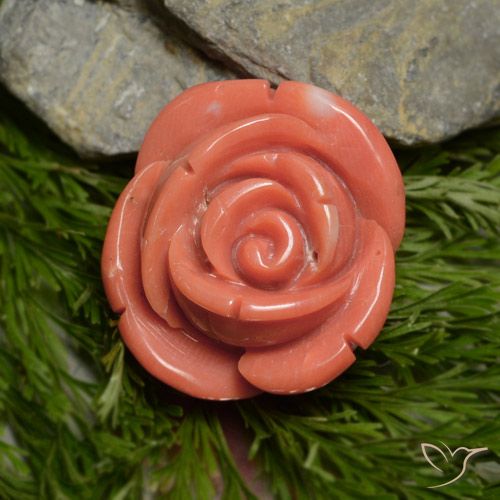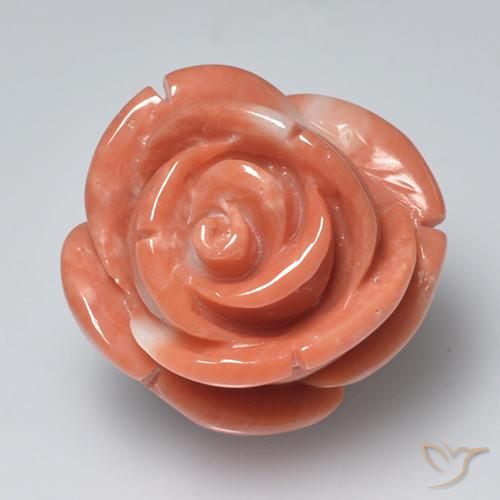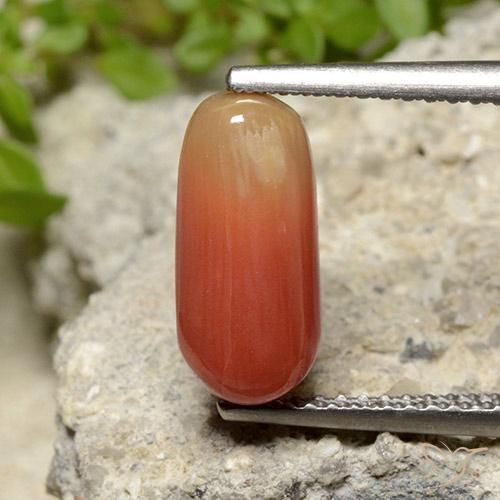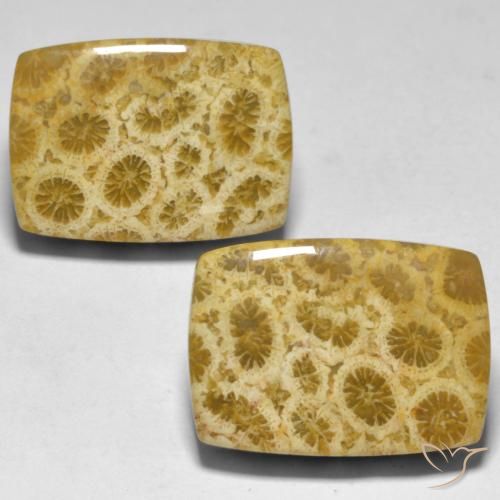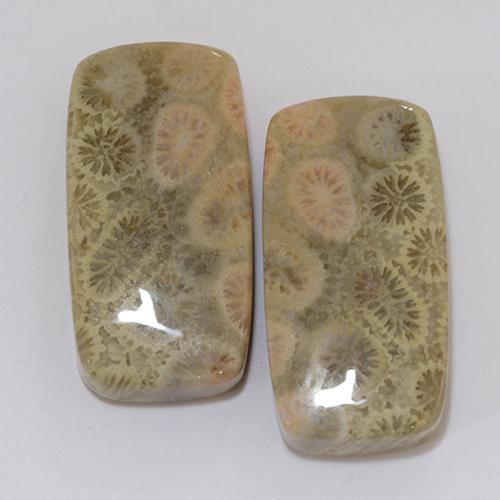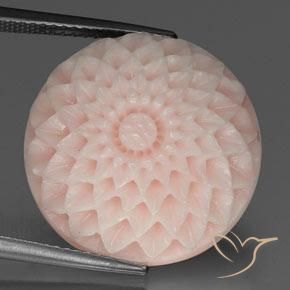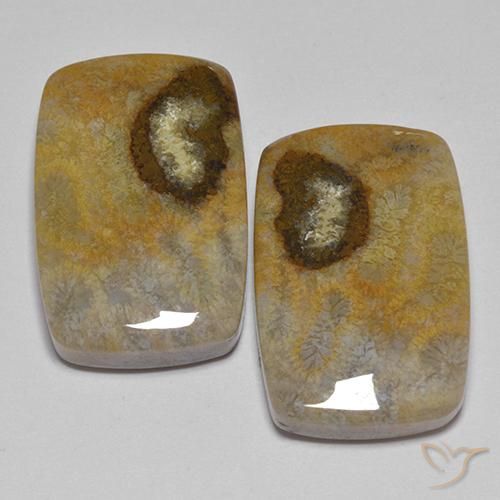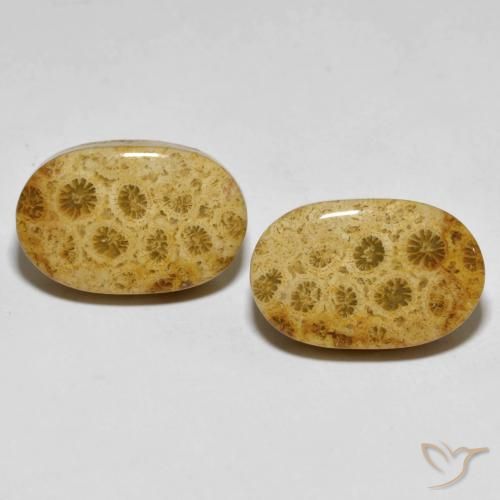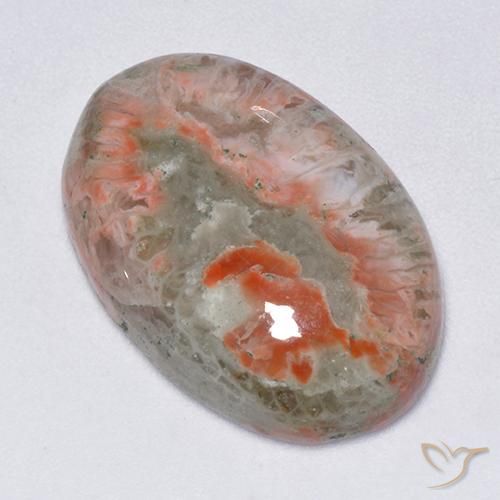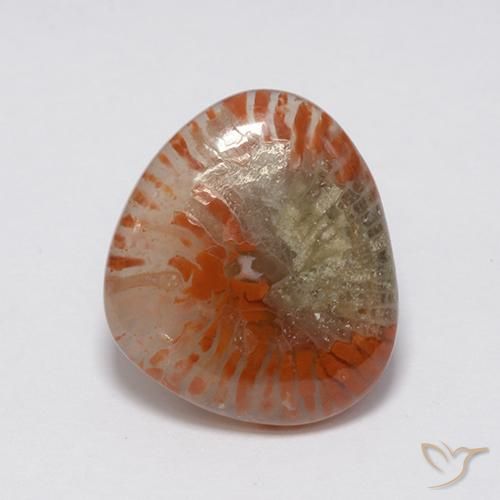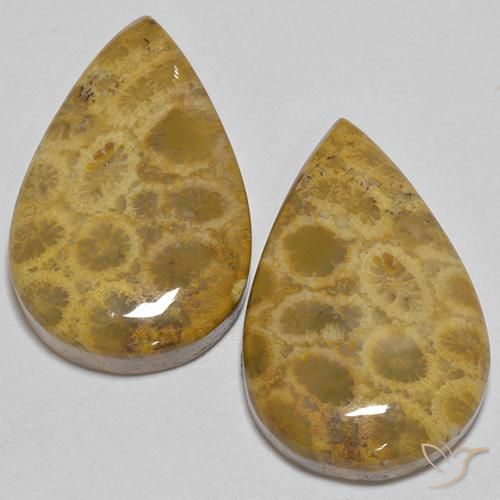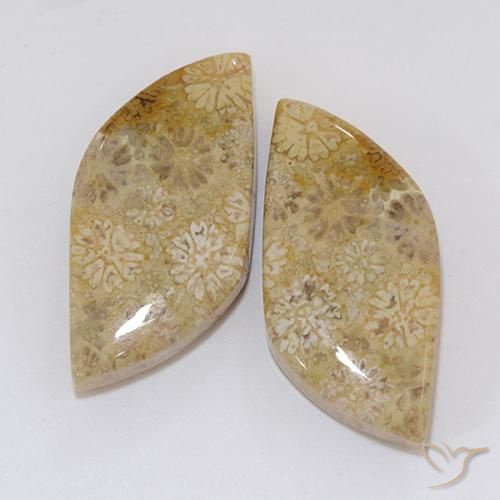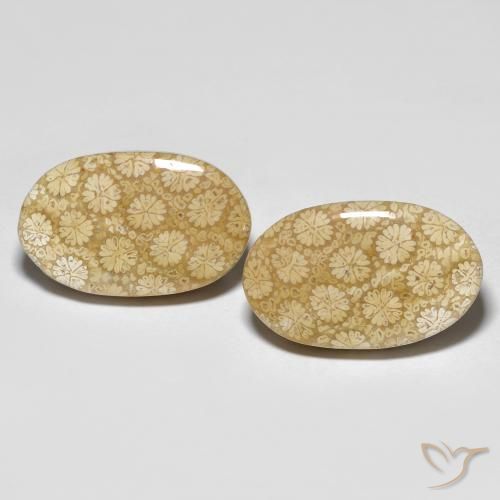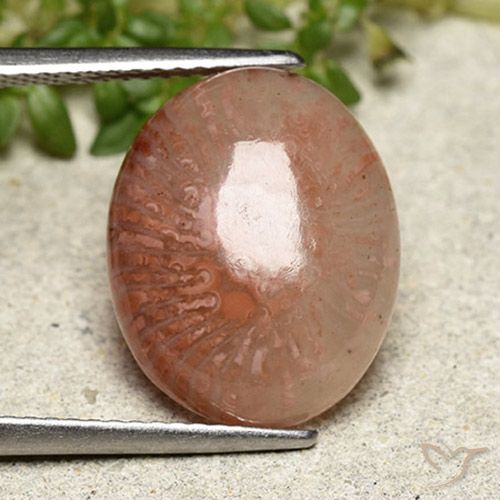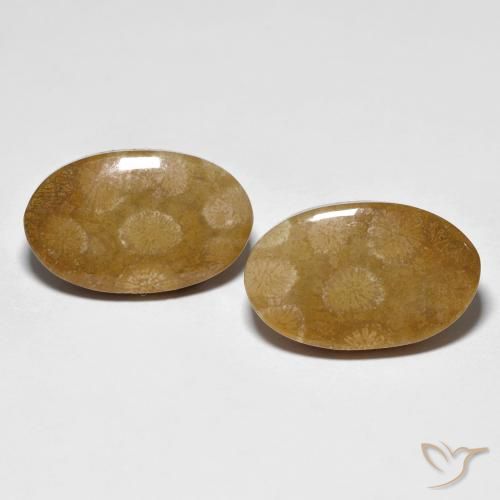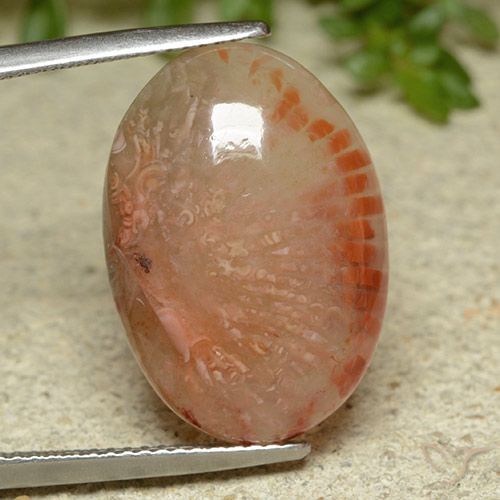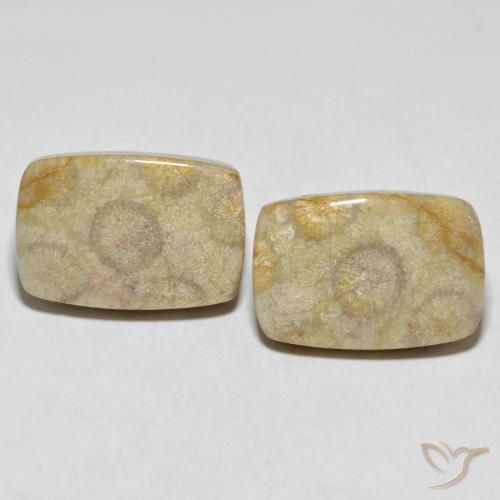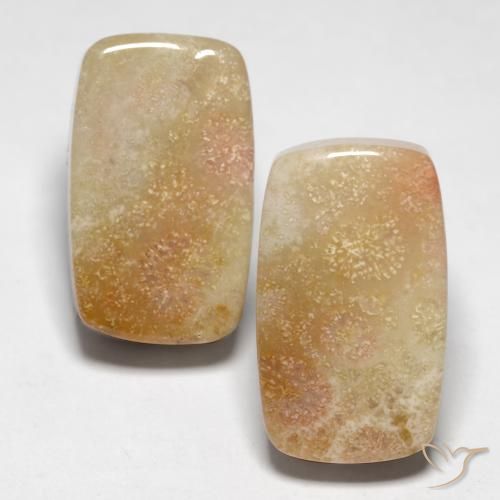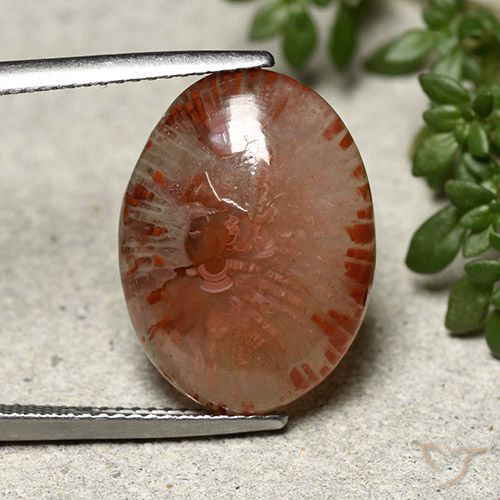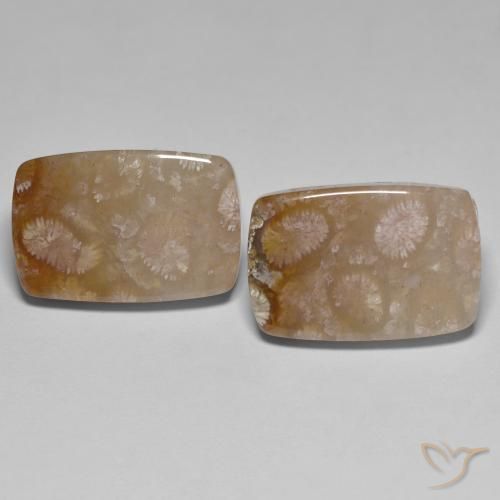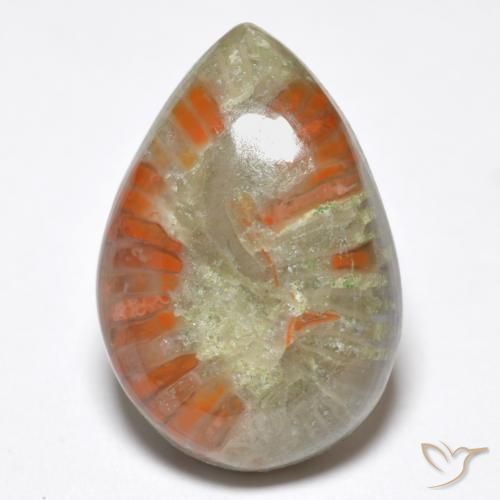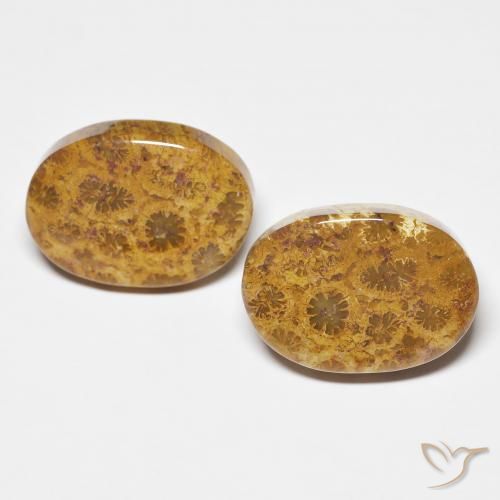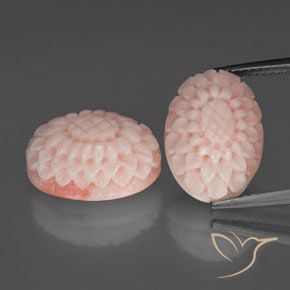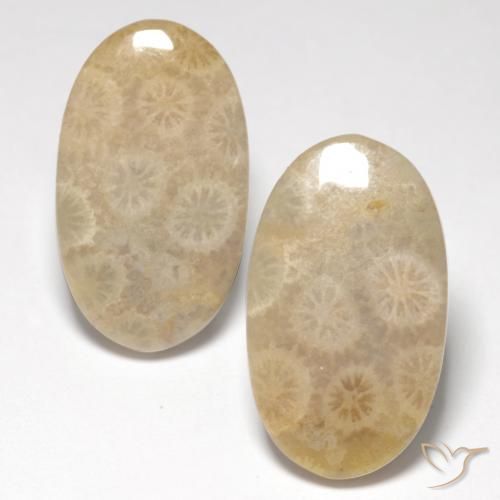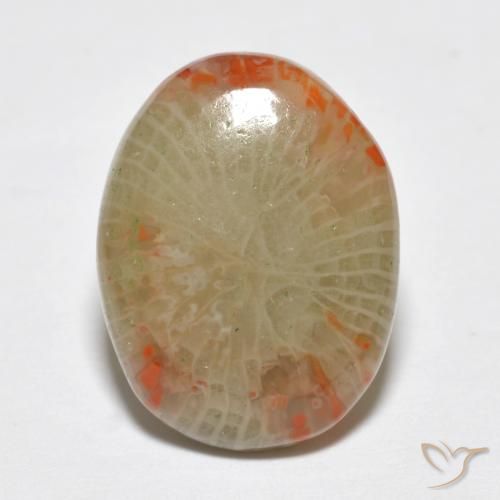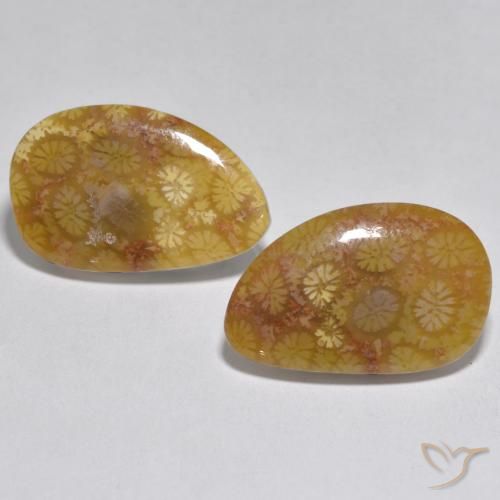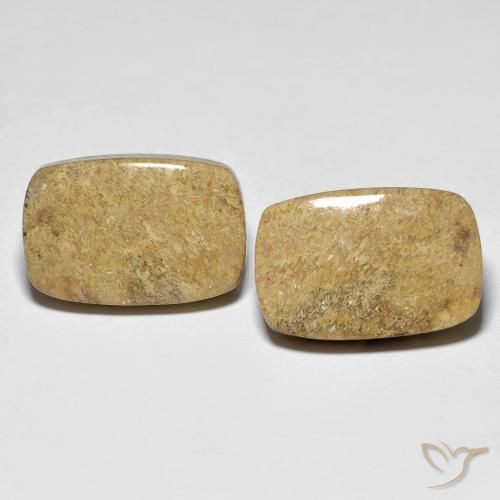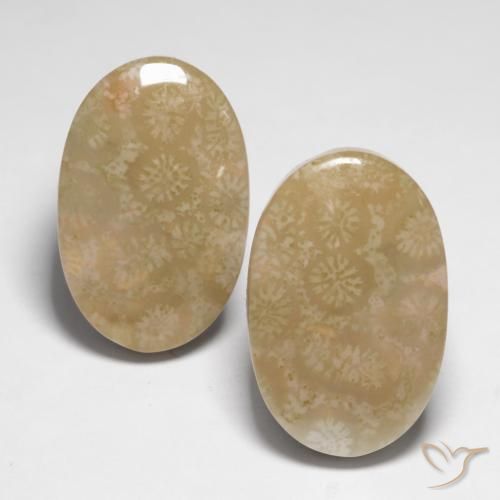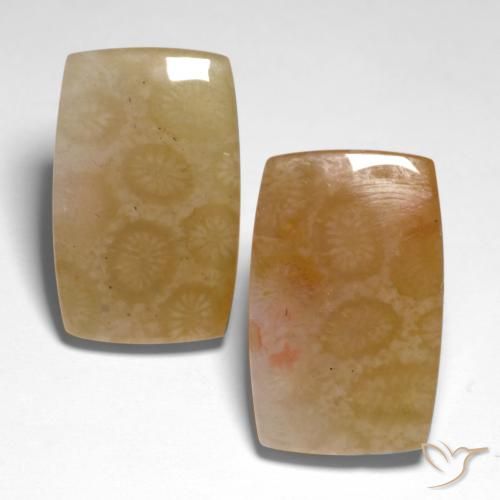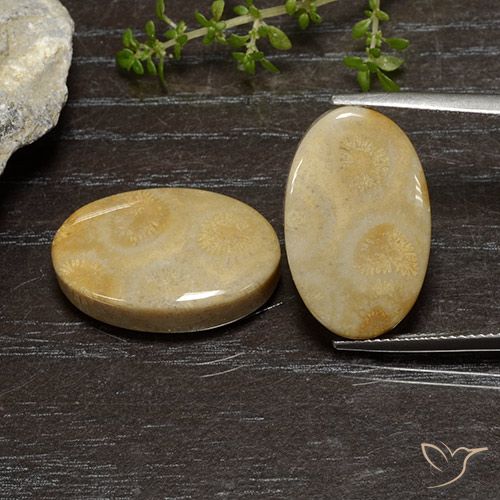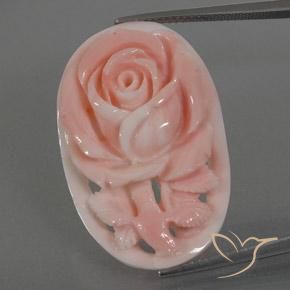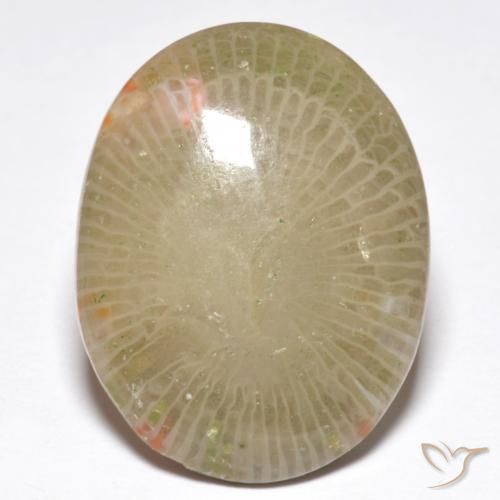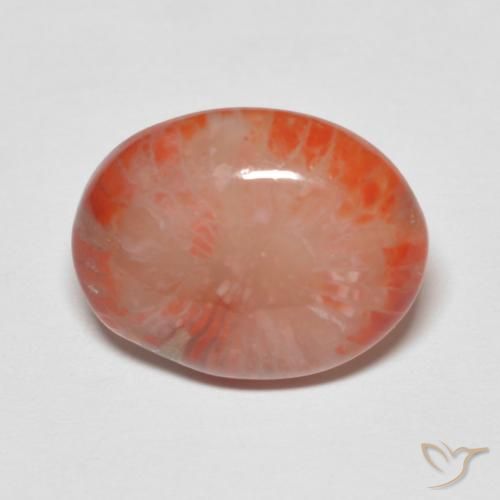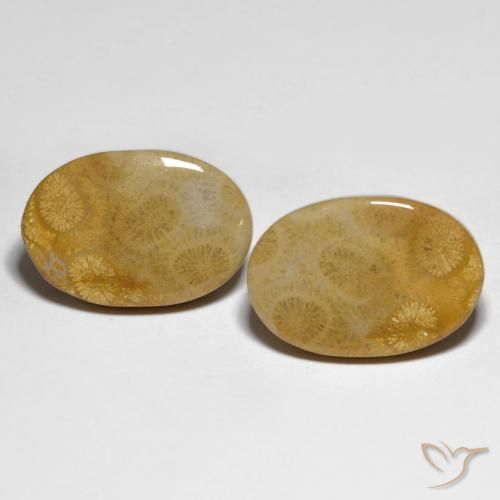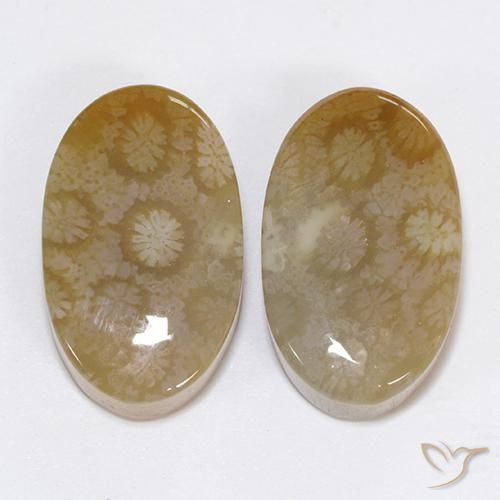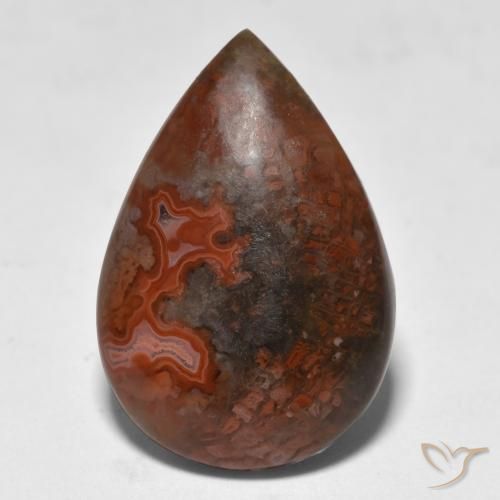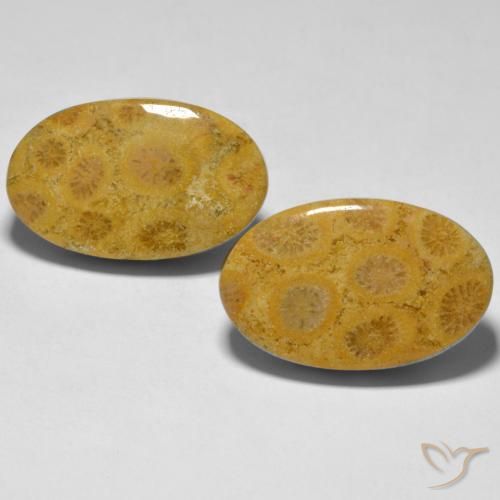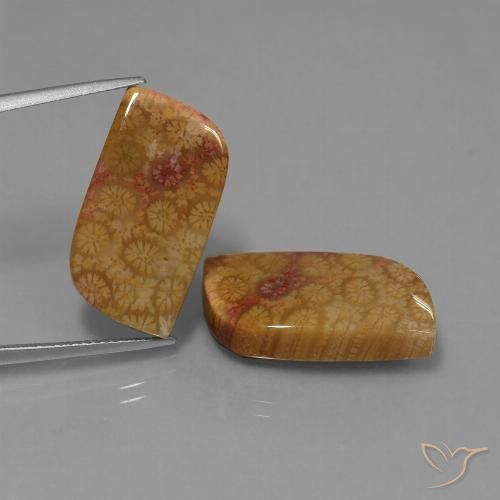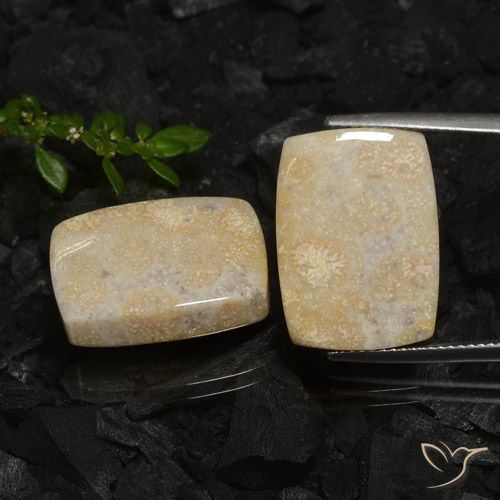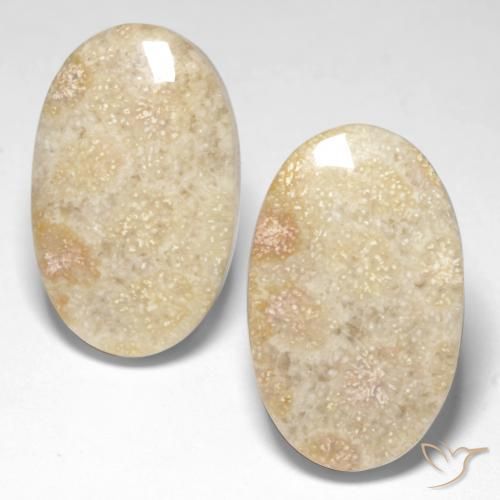Shop Loose Coral Gemstones, Coral Cabochons, Coral Beads, Red and Pink Coral Stones
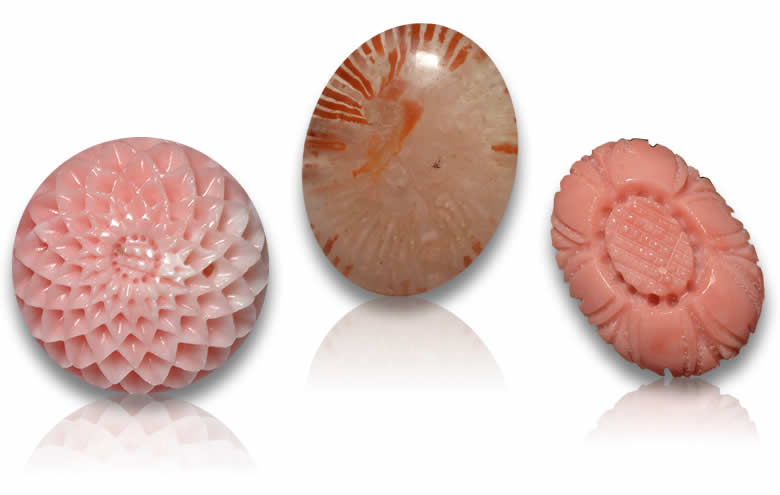
|
Welcome to our collection of loose coral gemstones, featuring a variety of natural coral stones perfect for creating exquisite jewelry. Explore the beauty of red coral, the elegance of pink coral, and the rarity of Italian coral. Whether you're searching for polished coral cabochons, unpolished coral nuggets, or versatile coral beads, we offer a range of options to suit your needs. Ideal for jewelry making or as part of a vintage collection, our selection also includes unique pieces like coral pendants and coral gemstone rough for custom designs. |
|
Bi-color
|
Black
|
Blue
|
Brown
|
Golden
|
Gray
|
Green
|
Multicolor Coral
|
Orange Coral
|
Pink Coral
|
Purple
|
Red Coral
|
Turquoise
|
Violet
|
White Coral
|
Yellow
|
Single |
Pairs |
Lots |
Faceted |
Cabochons |
| ID: | 256344 |
| Weight: | 31.12ct |
| Size: | 21.4 x 20.7 mm |
| Clarity: | Opaque |
| Content: | 1 pc |
| Price: | $ 653.40 |
| Item in Stock | |
| More Options & Item Details | |
| ID: | 552032 |
| Weight: | 11.09ct |
| Size: | 17 mm (calibrated) |
| Clarity: | Translucent |
| Content: | 1 pc |
| Price: | $ 29.28 |
| Item in Stock | |
| More Options & Item Details | |
| ID: | 514331 |
| Weight: | 29.23ct (total) |
| Size: | 21.7 x 14.7 mm |
| Clarity: | Opaque |
| Content: | 2 pcs |
| Price: | $ 76.40 |
| Item in Stock | |
| More Options & Item Details | |
| ID: | 499209 |
| Weight: | 2.11ct |
| Size: | 11.9 x 5 mm |
| Clarity: | Opaque |
| Content: | 1 pc |
| Price: | $ 348.15 |
| Item in Stock | |
| More Options & Item Details | |
| ID: | 565407 |
| Weight: | 5.76ct |
| Size: | 13 mm (calibrated) |
| Clarity: | Translucent |
| Content: | 1 pc |
| Price: | $ 22.81 |
| Item in Stock | |
| More Options & Item Details | |
| ID: | 510930 |
| Weight: | 41.05ct (total) |
| Size: | 20 x 15.7 mm |
| Clarity: | Opaque |
| Content: | 2 pcs |
| Price: | $ 73.60 |
| Item in Stock | |
| More Options & Item Details | |
| ID: | 514176 |
| Weight: | 27.28ct (total) |
| Size: | 17 x 12.9 mm |
| Clarity: | Opaque |
| Content: | 2 pcs |
| Price: | $ 59.41 |
| Item in Stock | |
| More Options & Item Details | |
| ID: | 552030 |
| Weight: | 11.65ct |
| Size: | 21.6 x 15.8 mm |
| Clarity: | Translucent |
| Content: | 1 pc |
| Price: | $ 25.63 |
| Item in Stock | |
| More Options & Item Details | |
| ID: | 514175 |
| Weight: | 16.64ct (total) |
| Size: | 14.3 x 11 mm |
| Clarity: | Opaque |
| Content: | 2 pcs |
| Price: | $ 36.25 |
| Item in Stock | |
| More Options & Item Details | |
| ID: | 605441 |
| Weight: | 33.38ct (total) |
| Size: | 20.6 x 13.8 mm |
| Clarity: | Opaque |
| Content: | 2 pcs |
| Price: | $ 43.33 |
| Item in Stock | |
| More Options & Item Details | |
| ID: | 450086 |
| Weight: | 35.05ct (total) |
| Size: | 18.6 x 14.3 mm |
| Clarity: | Opaque |
| Content: | 2 pcs |
| Price: | $ 92.53 |
| Item in Stock | |
| More Options & Item Details | |
| ID: | 514341 |
| Weight: | 21.24ct (total) |
| Size: | 20.2 x 11 mm |
| Clarity: | Opaque |
| Content: | 2 pcs |
| Price: | $ 55.52 |
| Item in Stock | |
| More Options & Item Details | |
| ID: | 550359 |
| Weight: | 23.45ct (total) |
| Size: | 20 x 12.7 mm |
| Clarity: | Opaque |
| Content: | 2 pcs |
| Price: | $ 35.28 |
| Item in Stock | |
| More Options & Item Details | |
| ID: | 517241 |
| Weight: | 7.51ct |
| Size: | 14 mm (calibrated) |
| Clarity: | Translucent |
| Content: | 1 pc |
| Price: | $ 28.64 |
| Item in Stock | |
| More Options & Item Details | |
| ID: | 450089 |
| Weight: | 28.61ct (total) |
| Size: | 25 x 18 mm (calibrated) |
| Clarity: | Opaque |
| Content: | 2 pcs |
| Price: | $ 75.53 |
| Item in Stock | |
| More Options & Item Details | |
| ID: | 254862 |
| Weight: | 4.07ct |
| Size: | 9.9 x 4.4 mm |
| Clarity: | Opaque |
| Content: | 1 pc |
| Price: | $ 73.70 |
| Item in Stock | |
| More Options & Item Details | |
| ID: | 605440 |
| Weight: | 25.29ct (total) |
| Size: | 18.2 x 11.4 mm |
| Clarity: | Opaque |
| Content: | 2 pcs |
| Price: | $ 39.38 |
| Item in Stock | |
| More Options & Item Details | |
| ID: | 499173 |
| Weight: | 2.12ct |
| Size: | 10.9 x 5.4 mm |
| Clarity: | Opaque |
| Content: | 1 pc |
| Price: | $ 419.76 |
| Item in Stock | |
| More Options & Item Details | |
| ID: | 518172 |
| Weight: | 6.25ct |
| Size: | 14 mm (calibrated) |
| Clarity: | Translucent |
| Content: | 1 pc |
| Price: | $ 19.87 |
| Item in Stock | |
| More Options & Item Details | |
| ID: | 510934 |
| Weight: | 37.10ct (total) |
| Size: | 18.4 x 15 mm |
| Clarity: | Opaque |
| Content: | 2 pcs |
| Price: | $ 79.82 |
| Item in Stock | |
| More Options & Item Details | |
| ID: | 256349 |
| Weight: | 18.78ct |
| Size: | 18.1 x 16.9 mm |
| Clarity: | Opaque |
| Content: | 1 pc |
| Price: | $ 396.64 |
| Item in Stock | |
| More Options & Item Details | |
| ID: | 256350 |
| Weight: | 19.58ct |
| Size: | 18.2 x 16.9 mm |
| Clarity: | Opaque |
| Content: | 1 pc |
| Price: | $ 344.61 |
| Item in Stock | |
| More Options & Item Details | |
| ID: | 499196 |
| Weight: | 2.78ct |
| Size: | 12 x 5.6 mm |
| Clarity: | Opaque |
| Content: | 1 pc |
| Price: | $ 550.44 |
| Item in Stock | |
| More Options & Item Details | |
| ID: | 564689 |
| Weight: | 30.59ct (total) |
| Size: | 18 x 13 mm (calibrated) |
| Clarity: | Opaque |
| Content: | 2 pcs |
| Price: | $ 69.85 |
| Item in Stock | |
| More Options & Item Details | |
| ID: | 510935 |
| Weight: | 31.95ct (total) |
| Size: | 22.3 x 11.5 mm |
| Clarity: | Opaque |
| Content: | 2 pcs |
| Price: | $ 68.75 |
| Item in Stock | |
| More Options & Item Details | |
| ID: | 333530 |
| Weight: | 24.56ct |
| Size: | 19.5 x 19.3 mm |
| Clarity: | Opaque |
| Content: | 1 pc |
| Price: | $ 421.45 |
| Item in Stock | |
| More Options & Item Details | |
| ID: | 514179 |
| Weight: | 24.86ct (total) |
| Size: | 18.7 x 12.5 mm |
| Clarity: | Opaque |
| Content: | 2 pcs |
| Price: | $ 64.97 |
| Item in Stock | |
| More Options & Item Details | |
| ID: | 605451 |
| Weight: | 29.82ct (total) |
| Size: | 20.3 x 13 mm |
| Clarity: | Opaque |
| Content: | 2 pcs |
| Price: | $ 46.45 |
| Item in Stock | |
| More Options & Item Details | |
| ID: | 518170 |
| Weight: | 13.71ct |
| Size: | 21 x 14.3 mm |
| Clarity: | Translucent |
| Content: | 1 pc |
| Price: | $ 52.30 |
| Item in Stock | |
| More Options & Item Details | |
| ID: | 492381 |
| Weight: | 7.59ct |
| Size: | 15.6 x 13.5 mm |
| Clarity: | Translucent |
| Content: | 1 pc |
| Price: | $ 23.79 |
| Item in Stock | |
| More Options & Item Details | |
| ID: | 514339 |
| Weight: | 40.40ct (total) |
| Size: | 25.1 x 16.4 mm |
| Clarity: | Opaque |
| Content: | 2 pcs |
| Price: | $ 105.59 |
| Item in Stock | |
| More Options & Item Details | |
| ID: | 510936 |
| Weight: | 20.45ct (total) |
| Size: | 23.6 x 11 mm |
| Clarity: | Opaque |
| Content: | 2 pcs |
| Price: | $ 43.99 |
| Item in Stock | |
| More Options & Item Details | |
| ID: | 606938 |
| Weight: | 26.24ct (total) |
| Size: | 21.3 x 13.2 mm |
| Clarity: | Opaque |
| Content: | 2 pcs |
| Price: | $ 40.87 |
| Item in Stock | |
| More Options & Item Details | |
| ID: | 492400 |
| Weight: | 6.97ct |
| Size: | 15 x 12 mm |
| Clarity: | Translucent |
| Content: | 1 pc |
| Price: | $ 26.22 |
| Item in Stock | |
| More Options & Item Details | |
| ID: | 606936 |
| Weight: | 21.21ct (total) |
| Size: | 20.1 x 12.5 mm |
| Clarity: | Opaque |
| Content: | 2 pcs |
| Price: | $ 33.04 |
| Item in Stock | |
| More Options & Item Details | |
| ID: | 492478 |
| Weight: | 11.62ct |
| Size: | 20.4 x 14.3 mm |
| Clarity: | Translucent |
| Content: | 1 pc |
| Price: | $ 43.72 |
| Item in Stock | |
| More Options & Item Details | |
| ID: | 605442 |
| Weight: | 30.24ct (total) |
| Size: | 19.4 x 13.1 mm |
| Clarity: | Opaque |
| Content: | 2 pcs |
| Price: | $ 47.10 |
| Item in Stock | |
| More Options & Item Details | |
| ID: | 550584 |
| Weight: | 28.47ct (total) |
| Size: | 18.8 x 11.1 mm |
| Clarity: | Opaque |
| Content: | 2 pcs |
| Price: | $ 42.85 |
| Item in Stock | |
| More Options & Item Details | |
| ID: | 492377 |
| Weight: | 10.04ct |
| Size: | 18.7 x 14 mm |
| Clarity: | Translucent |
| Content: | 1 pc |
| Price: | $ 37.76 |
| Item in Stock | |
| More Options & Item Details | |
| ID: | 606835 |
| Weight: | 26.92ct (total) |
| Size: | 18.7 x 12.4 mm |
| Clarity: | Translucent |
| Content: | 2 pcs |
| Price: | $ 38.12 |
| Item in Stock | |
| More Options & Item Details | |
| ID: | 552436 |
| Weight: | 6.76ct |
| Size: | 16.6 x 11.2 mm |
| Clarity: | Opaque |
| Content: | 1 pc |
| Price: | $ 17.84 |
| Item in Stock | |
| More Options & Item Details | |
| ID: | 482194 |
| Weight: | 21.12ct (total) |
| Size: | 17.1 x 12.1 mm |
| Clarity: | Opaque |
| Content: | 2 pcs |
| Price: | $ 24.84 |
| Item in Stock | |
| More Options & Item Details | |
| ID: | 333645 |
| Weight: | 16.70ct (total) |
| Size: | 15.3 x 11.1 mm |
| Clarity: | Opaque |
| Content: | 2 pcs |
| Price: | $ 242.48 |
| Item in Stock | |
| More Options & Item Details | |
| ID: | 551522 |
| Weight: | 21.21ct (total) |
| Size: | 20.8 x 12.1 mm |
| Clarity: | Translucent |
| Content: | 2 pcs |
| Price: | $ 31.92 |
| Item in Stock | |
| More Options & Item Details | |
| ID: | 552297 |
| Weight: | 5.78ct |
| Size: | 16 x 12 mm (calibrated) |
| Clarity: | Translucent |
| Content: | 1 pc |
| Price: | $ 15.26 |
| Item in Stock | |
| More Options & Item Details | |
| ID: | 566489 |
| Weight: | 16.46ct (total) |
| Size: | 19.6 x 12.3 mm |
| Clarity: | Opaque |
| Content: | 2 pcs |
| Price: | $ 37.60 |
| Item in Stock | |
| More Options & Item Details | |
| ID: | 606940 |
| Weight: | 23.12ct (total) |
| Size: | 18.4 x 12.2 mm |
| Clarity: | Opaque |
| Content: | 2 pcs |
| Price: | $ 36.01 |
| Item in Stock | |
| More Options & Item Details | |
| ID: | 550349 |
| Weight: | 28.25ct (total) |
| Size: | 20.8 x 13.5 mm |
| Clarity: | Opaque |
| Content: | 2 pcs |
| Price: | $ 42.52 |
| Item in Stock | |
| More Options & Item Details | |
| ID: | 551152 |
| Weight: | 31.00ct (total) |
| Size: | 20.9 x 13.2 mm |
| Clarity: | Translucent |
| Content: | 2 pcs |
| Price: | $ 46.64 |
| Item in Stock | |
| More Options & Item Details | |
| ID: | 482213 |
| Weight: | 27.16ct (total) |
| Size: | 20.3 x 12.7 mm |
| Clarity: | Opaque |
| Content: | 2 pcs |
| Price: | $ 35.14 |
| Item in Stock | |
| More Options & Item Details | |
| ID: | 344912 |
| Weight: | 22.80ct |
| Size: | 30.9 x 20 mm |
| Clarity: | Opaque |
| Content: | 1 pc |
| Price: | $ 383.04 |
| Item in Stock | |
| More Options & Item Details | |
| ID: | 552617 |
| Weight: | 13.91ct |
| Size: | 23.3 x 17.9 mm |
| Clarity: | Translucent |
| Content: | 1 pc |
| Price: | $ 36.72 |
| Item in Stock | |
| More Options & Item Details | |
| ID: | 492418 |
| Weight: | 4.60ct |
| Size: | 14.1 x 11 mm |
| Clarity: | Translucent |
| Content: | 1 pc |
| Price: | $ 17.30 |
| Item in Stock | |
| More Options & Item Details | |
| ID: | 606478 |
| Weight: | 29.58ct (total) |
| Size: | 22.4 x 15.1 mm |
| Clarity: | Opaque |
| Content: | 2 pcs |
| Price: | $ 46.07 |
| Item in Stock | |
| More Options & Item Details | |
| ID: | 510927 |
| Weight: | 30.48ct (total) |
| Size: | 20.5 x 12.5 mm |
| Clarity: | Opaque |
| Content: | 2 pcs |
| Price: | $ 65.58 |
| Item in Stock | |
| More Options & Item Details | |
| ID: | 566693 |
| Weight: | 9.18ct |
| Size: | 19.9 x 13.6 mm |
| Clarity: | Translucent |
| Content: | 1 pc |
| Price: | $ 36.35 |
| Item in Stock | |
| More Options & Item Details | |
| ID: | 564690 |
| Weight: | 27.44ct (total) |
| Size: | 22.1 x 13.6 mm |
| Clarity: | Opaque |
| Content: | 2 pcs |
| Price: | $ 62.66 |
| Item in Stock | |
| More Options & Item Details | |
| ID: | 454680 |
| Weight: | 28.06ct (total) |
| Size: | 21.7 x 12.1 mm |
| Clarity: | Opaque |
| Content: | 2 pcs |
| Price: | $ 37.04 |
| Item in Stock | |
| More Options & Item Details | |
| ID: | 472141 |
| Weight: | 30.12ct (total) |
| Size: | 18.6 x 13.6 mm |
| Clarity: | Opaque |
| Content: | 2 pcs |
| Price: | $ 59.64 |
| Item in Stock | |
| More Options & Item Details | |
| ID: | 551524 |
| Weight: | 29.31ct (total) |
| Size: | 22.2 x 13.8 mm |
| Clarity: | Opaque |
| Content: | 2 pcs |
| Price: | $ 44.10 |
| Item in Stock | |
| More Options & Item Details | |
FAQs
What are loose coral gemstones?
Loose coral gemstones are individual pieces of natural coral stones that have been polished or left unpolished for use in jewelry making. These stones come in various forms, such as coral cabochons, coral beads, and raw coral gemstone rough.
What types of loose coral are available?
Our collection features a range of loose coral options, including red coral, pink coral, and rare Italian coral. Each variety offers unique colors and characteristics, making them popular for both vintage coral jewelry and modern designs.
How can loose coral be used in jewelry making?
Loose coral can be used in various types of jewelry, such as coral pendants, bracelets, and necklaces. Common choices include coral beads, coral cabochons, and coral nuggets. It’s also popular for coral carving, allowing artisans to create intricate designs.
Is loose coral sourced sustainably from coral reefs?
Yes, our sea coral stones and loose coral gemstones are sourced responsibly to ensure the preservation of coral reefs. We focus on offering high-quality, authentic pieces that do not harm marine ecosystems.
What is the difference between polished and unpolished coral?
Polished coral stones, such as coral cabochons and gemstone beads, have a smooth, glossy finish. In contrast, unpolished coral or coral gemstone rough retains its natural, raw texture, making it ideal for collectors or custom coral jewelry making projects.
Are there specific care tips for coral jewelry?
Yes, precious coral stones should be handled with care. Avoid exposure to harsh chemicals, and store them separately from other jewelry pieces to prevent scratches, especially when dealing with delicate items like coral bracelet beads or vintage coral jewelry.
GemSelect Certified Store Reviews
GemSelect: Over 22 Years in the Gemstone Business! Thank you for trusting us with your purchase!
Overall Rating -> 10 ![]()
I have been very happy with my prior purchases and enjoy the website experience.
Overall Rating -> 10 ![]()
My whole experience is great.
Overall Rating -> 10 ![]()
hassle free experience.
Overall Rating -> 10 ![]()
looked at pink stones and at sapphires bought some sapphires. I love looking and collecting gemstones. .
Overall Rating -> 10 ![]()
Awesome
Overall Rating -> 10 ![]()
So far, my experience was great...Thanks
Overall Rating -> 10 ![]()
very good
Overall Rating -> 10 ![]()
Very good
Overall Rating -> 10 ![]()
I would recommend GemSelect. Quality, description, price and availability

